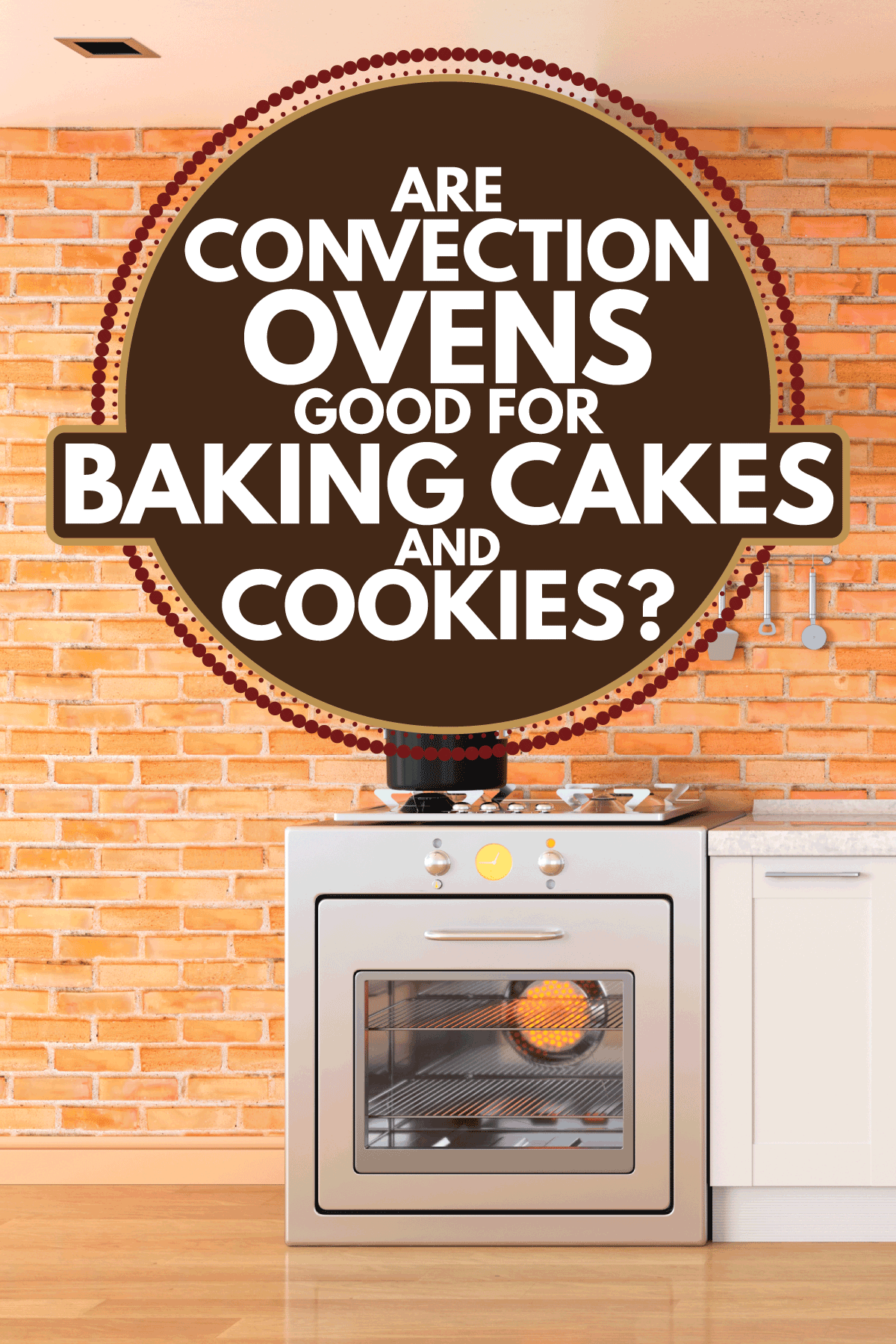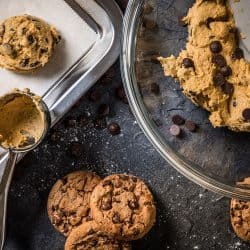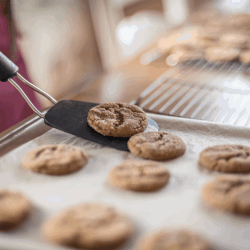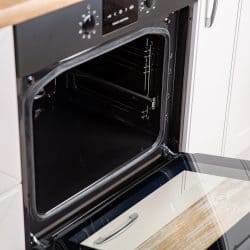Convection ovens were once a luxury for professional kitchens, but now they are a common addition to the home kitchen. These ovens use a fan to circulate heat throughout the oven for more even roasting and baking, making it an exciting tool for home cooks. But are convection ovens a good choice for baking cakes and cookies? We've studied this baking method to get the answer for you.
Convection ovens can work well when baking denser batters like cookies or scones, giving these treats a crispier crust. But many find that the movement of heat in a convection oven prevents cakes and other light batters from getting a proper rise, so most of the time, it would be better to bake cakes in a conventional oven.
You've probably heard about the benefits of baking desserts in a convection oven, and there are times when using one will yield a great result. We've researched the differences in baking with a conventional versus a convection oven to determine what situations call for each type of oven. Read on to clear up any confusion you may have about convection oven baking.

How Does A Convection Oven Work?
Convection ovens bake differently than conventional ovens; the dry heat is circulated by a fan at the back of the oven. Heat moves all around your food to maintain the proper temperature throughout the cooking time. This movement also removes moisture from the oven, creating a crispier and browned crust on food.
The Pros of Convection Ovens
Circulating heat is believed to cook more evenly, browning meat all around, for example. The heat distribution also cooks dishes more quickly. In conventional ovens, stacking dishes will result in uneven cooking for each dish, and if you place the dish too close to the heating element, your food may burn. But convection ovens allow you to stack dishes or cook more than one dish at a time; the oven will maintain the proper temperature for each dish, regardless of where they are placed in the oven.
The Cons of Convection Ovens
Most home cooks have a learning curve in what they need to do to use their convection oven correctly. Because most recipes are created for conventional ovens, you need to make adjustments before cooking. These adjustments may include lowering the temperature and decreasing the cooking time. In a convection oven, baking sweets is a little trickier; that heat movement affects dough and batter more than a constant, still heat and may make your dessert shorter with less rise.
Convection Ovens For Baking Any Recipe
The author of a recipe utilizes kitchen tools a certain way to generate a specific result. Cakes and cookies that were created using a conventional oven may not rise as well and have a harder crust when baked in a convection oven.
Unless the recipe specifically calls for a convection oven, you should not follow a written recipe when baking with your convection function --instead, temperature and cook time adjustments might be necessary. For instance, most food experts do not recommend baking cakes and similar desserts in convection ovens, but small adjustments can successfully bake other sweets with a denser batter.
Click here to see Harbor digital kitchen timer at Amazon.
What Temperature Do You Bake Cookies In A Convection Oven?
Convection ovens cook more efficiently than conventional ovens. That's why food experts recommend lowering the temperature listed in the recipe by about 25 degrees. You may need to experiment with each particular recipe, but that is a good starting point. You should also check your cookies well before the recipe time noted, about 10 minutes earlier, since they will bake faster than in a conventional oven.
But don't worry about turning and switching baking pans if you bake two pans of cookies at a time. The even heat distribution maintains the temperature for both pans for the duration of the cooking time.
Click here to see this Rachel Ray bakeware set at Amazon.
How Do You Keep Cookies Shaped When Baking?
To keep your cookies shaped while baking, use parchment paper or silicone baking mats instead of spraying your cookie sheet with nonstick spray. The paper or mats create a solid base for the cookie to cling to instead of a greasy one.
Click here to see Amazon Basics silicone baking mat at Amazon.
Freezing your cookies for 10 minutes before baking will also help with maintaining the cookie's shape. And you should always let your cookie sheet cool before baking another batch of cookies; putting cookie dough on a hot baking pan will cause it to spread quickly and lose its shape.
What Temperature Do You Bake A Cake In A Convection Oven?
Food experts generally do not recommend baking cakes in convection ovens. Cakes rise best with a steady heat; the heat movement adjusts the crumb of the cake and may cause it not to rise properly.
But if you want to experiment with your oven, you can start by reducing the baking temperature by 25 degrees or by around five to ten degrees less than the recipe calls for if the cake is large. And just like with cookies, always make sure to check your cake at least 10 minutes before the recipe says to check since convection ovens cook much more efficiently than conventional ovens.
What Foods Are Best Cooked In A Convection Oven?
Meats and vegetables benefit from convection cooking because the heat distribution roasts them faster and gives them crispy skin and lovely brown coloring.
Pies and pastries get a lift from the even heat movement; the heat melts fat faster, making the pastries lighter and fluffier. Baking multiple pans of cookies is also great in a convection oven because the even heat eliminates the need to switch the pans midway through cooking.
What Foods Do Not Cook Well In A Convection Oven?
You should try to avoid cakes and other foods with light batter such as quick bread, souffle, and custard. But many food bloggers and chefs have success baking all kinds of treats in a convection oven, though it takes several adjustments and experimentation. You can always try different techniques with your desserts to see if you can get convection baking to give you good results.
Should You Get A Convection Oven?
Convection ovens are much more common now, but you may not be certain if you want one or not. The convection capability will add a new dimension to your cooking, especially if you are willing to experiment. But if you're still unsure if you need one, a good compromise is to find an oven that has a convection function that turns off. There are many different types on the market in various price ranges, so you will be sure to find one that fits your kitchen, cooking style, and budget.
In Closing
Convection ovens are great for many foods, such as roasts and veggies; they brown food quickly and evenly. They can also add a crispy edge to your cookies and other dense batters, such as scones and pie crusts. But it is not recommended to bake your cakes or other light batters, like souffle and quick bread, in convection ovens because the heat distribution may ruin the crumb and prevent a proper rise.









